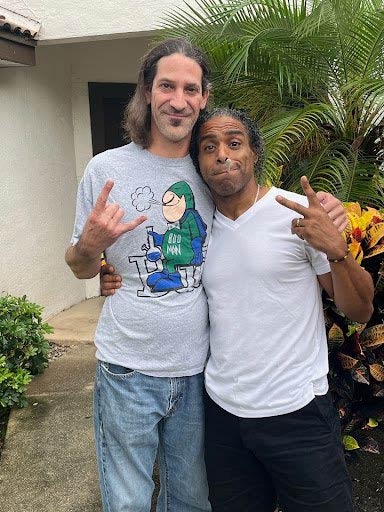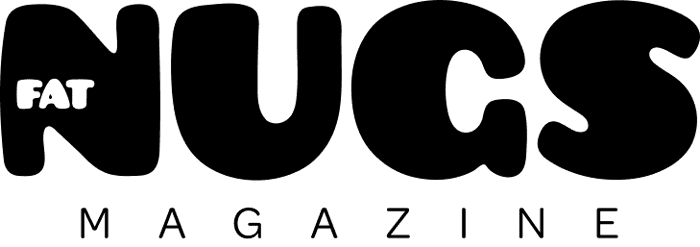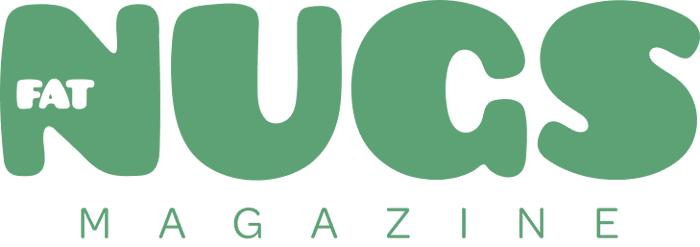Art Courtesy of Casey Renteria
Matthew Dean
Let’s talk about cannabis before it was legal, before it was accepted by most Americans, and let’s talk about it more recently, too. Are you in?
Join us for a discussion about legacy cannabis culture and more.
I had the privilege of chatting with Matthew Dean. A legacy operator and cannabis writer known by many monikers – Matteo, Matthew, or the enigmatic “plug” in certain circles.
Matthew immerses us in the essence of cannabis culture, he unravels the details of Florida’s program, and his trip to California during early Prop 215 days.
Prepare to step into an earlier time, a time before cannabis donned its “licensed” attire. Matthew shares the experiences he’ll never forget. And, experiences many of us have never lived. It is important to share these stories.
Matthew’s dreams were coming true in the 90s when he left Florida and sought a new life in California. Matthew would inhabit the same spaces as some of the founding fathers and mothers of the medical cannabis movement, at the legendary San Francisco Cannabis Buyers Club.
Later, he would work within the belly of the corporate cannabis beast at Florida’s largest dispensary. Matthew wanted a legal path to cannabis, not corporate weed. He was fueled by an ardent yearning to carve a legal path within the cannabis industry. Before Florida passed Amendment 2 with over 71.3% of the vote in 2016, he never would have believed in a future where legal cannabis would bloom into reality.
California and The San Francisco Cannabis Buyers Club
Casting his gaze back in time, Matthew paints a picture of his voyage to California in the late 90s, following the passage of Proposition 215 (“Prop 215”). Prop 215 changed everything, thanks to Dennis Perron and the work of many others. It was amidst this San Francisco backdrop where Matthew bore witness to the healing powers of cannabis. Matthew shared how he saw cannabis delicately ease the burdens of his friend’s crippling migraines, creating a sanctuary free from the shackles of pain, auras, and afflictions.
Our conversation danced amidst cannabis and heat-soaked memories, Matthew shared his early encounters procuring quality cannabis in California. Matthew said he even fell victim to ‘shakedown street,’ maybe once or twice. Yet, things turned around when he arrived at the San Francisco Cannabis Buyers Club. The Buyer’s Club was an oasis bestowed upon cannabis patients by the work of the likes of Dennis Perron and other activists. It was a multi-story refuge from the jokers and charlatans of the time, and most importantly a place of deep healing for very sick people.
People were more cautious of others in California than Florida. It was tougher for him to meet people since he was an outsider at first. He said people came around to him and were kind, but definitely cautious. Overall, the higher prices and difficulty finding a quality supply was still challenging. Several others from Matthew’s generation confirmed prices ranged from $30 to $100 an eighth in the 90s in California. They also confirmed it was some of, if not, the absolute best ganja they ever imbibed.
Matthew said he had a connection in California where he could get quality cannabis from Monday through Friday, and one night the flower was even more gnarly than before. “Do you have any of that fire from last week?” Matthew asked. Knowing he was leaving town and wanting to be kind, she responded by giving him the last of a quarter pound bag, free of charge, likely an oz of shake and small buds.
A Legacy of Healing
Matthew knew cannabis was wrongly made illegal, seeing it help people who were suffering immensely was an incredibly powerful experience for him. Witnessing someone who could not eat have a voracious appetite after consuming a cannabis-infused brownie was something that stuck with him.
Cannabis Spirituality is a book which helped Matthew see cannabis as something more than a “high.” He said this book even covers how to talk to children about cannabis. Jack Herer’s “The Emperor Wears No Clothes” is another book which had a major impact on his life.
After his return from California, he found work at a one-stop-shop smoke and hemp retailer. The Hemp Factory sold a little bit of everything hemp related from hemp rugs to “water pipes for tobacco.” While selling glass and rolling papers wasn’t uncommon in 1999, selling a variety of hemp fabrics and a variety of goods was less prevalent.
Matthew shared he even learned to blow glass after moving back to Florida. He felt connected to the plant much more when he smoked out of the glass he created.
After moving on from the headshop he said he got back into being a trusted source of cannabis, before there were dispensaries.
Fat Nugs to Fat Nugs Mag
After seeing cannabis help so many people, Matthew decided cannabis would always be his focus in life. Matthew began networking and connecting with people on LinkedIn. One connection turned out to be quite life changing. Dustin Hoxworth, Founder and Editor-at-large of Fat Nugs Mag and Matthew talked about Fat Nugs when it was only a concept.
“What if I did Fat Nugs Magazine?” Dustin asked Matt. This kindled a fire of possibilities within Matt’s soul. However, as the embers of excitement kindled in his heart, waves crashed through his body when Dustin extended an invitation to contribute an article to the newly minted Fat Nugs Mag.
Guided by his internal compass, Matt wrote about his experiences and the possibilities for legal cannabis tourism on the high seas. His nerves subsided and his work spoke for itself as he wrote a killer article about cannabis on a cruise and tight quarters with strangers.
 Pipes to Propositions
Pipes to Propositions
In harmony with the natural cadence of his journey, Matt discovered himself immersed in the world of selling pipes, glassware, and the allure of hemp clothing. Every endeavor flowed effortlessly, an organic symphony of passion and purpose. Stay tuned as we roll up cannabis history and one man’s story through the early Prop 215 days in California all the way to Florida’s 2016 Medical Marijuana Program.
Interview
1. [Alex]: Why and when did you get involved in cannabis?
[Matthew]: It’s always been around. There was no cannabis stigma in my household, my parents just told me to be careful who I talk about cannabis with because of the risks.
I found half a joint my parents left and smoked it at around 8 or 9, I got paranoid after and tried to cover the scent with bug spray. It wasn’t weed paranoia, it was solely from the smell and the potential of getting caught. My dad was growing plants everywhere we lived, and he did it all outdoor, too. Everywhere we lived there was a corner of the yard. It has always been around me. It has been the only real constant in my life. I tried it around sophomore year or earlier.
I started selling weed because I really loved it, and I realized I could get it at a discount by selling it. I would go half weed and half cash. I made sure I had enough to help friends, I wasn’t greedy. This would’ve been my junior year of highschool. There was a camaraderie about being a stoner, from being private and having to hide it.
Going back behind the bookcases in the school library and having a sneak-a-toke was fun. It has always been around me. I grew up in a legacy household that appreciated the plant. My parents always said the world would be better if more people smoke.
2.[Alex]: Give an example of a time you have seen cannabis help someone, please.
[Matthew]: Cannabis was unknowingly helping people the whole time. I dated someone with Multiple Sclerosis (MS) and saw cannabis help them. Initially I didn’t know cannabis could help epilepsy or a myriad of other conditions, improving people’s quality of life. Specifically, witnessing how it helped my friend significantly with his grand mal seizures was eye opening. As well as the healing I witnessed through plant medicine at The San Francisco Cannabis Buyers Club. This was the first and only legal dispensary at the time.
3.[Alex]: Did you get your FL MMJ card and why (if you have one)? Can you describe the fluctuations you’ve witnessed in the Florida medical cannabis market since it began?
[Matthew]: Yeah I got my card in October of 2019 after working at a dispensary for about 3-4 months. I decided to stop dealing and became a patient and legal dealer instead. I look back at my time and know I was lucky and glad I was overly cautious. And that is why I made it, because I was discrete. But then I decided to stop and focus on being a patient and learned more about different modalities of cannabis other than smoking.
Before getting my card I already used CBD and I had a buddy with a company. I noticed it reduced my anxiety, to the point it was manageable. Plus we had a hurricane heading towards us, I noticed I wasn’t panicking. I was methodically checking things off my list. You know, getting your shit together. I noticed CBD helped my anxiety, back and neck issues, and inflammation overall. I started taking it shortly before Hurricane Matthew (ironically) hit Florida. I definitely think it helped me to not panic. I haven’t taken the best care of myself, but cannabis helps me care more and function better. I know others my age with more issues. All of these experiences have helped me appreciate the medical side of it more. Now I search for info on my own, and having a network online like LinkedIn is really useful. I utilize it to ask questions and get help.
As for the market fluctuations. Market demand for high-THC has always been here, but it has gotten worse. I had people turn their nose up at anything under 20%. Sometimes education can affect change on an individual level. It seems this way everywhere. Many were unwilling to learn about terpenes or other cannabinoids. I would love to help people open to learning. Many didn’t believe me at first but later reported the ratio products or lower THC even helped them.
My buddy said he was one of the first ten thousand to get his card. I thought it was a novelty at first, because there was no flower. Eventually there were “flower cups” or pods (flower in ceramic cups with metal mesh lids) and they only worked on a very expensive volcano vaporizer.
It wasn’t until I found out flower was going to be allowed that I decided to get more involved. I saw we were getting somewhere. Otherwise they are leaving tons of patients out who need smokable cannabis.
At the first clinic I was doing more cannabis education than the doctor was. This was the case until my second clinic job which was a better, more balanced experience. The doctors were much more informed on cannabis and cannabinoids. I learned more from my cannabis recommending physician than from any other doctors. Patients would open up to this doctor as well. I found my zone, my way, in this clinic. I wasn’t supposed to upsell, I was only there to help them feel safer at the dispensaries and to teach them about cannabis.
4.[Alex]: In terms of product diversity, what are your thoughts on the availability of high-quality medical flower and extracts in Florida’s licensed market? Are ratio products readily available to patients?
[Matthew]: I think we’re better now than we were in 2019. There are definitely more products and more options. There are more modalities and even the dispensaries who seemed more focused on flower are coming out with more options, too. I also noticed patients often stay in their comfort zone. I tell them to form their own opinions and try other places, there are first time discounts and other benefits to trying others.
Ratios are now becoming much more prevalent. Before it was pretty much all THC or a 1:1. Aside from the occasional super high CBD to THC ratio. I used a 1:1 vape for anxiety. It helped me get through busy days and really brought my anxiety down.
Do we need more ratio products? I definitely think so, CBGA, CBDA, and others.
5.[Alex]: Are there concerns about fairness and equity within the Florida Medical market? Could you describe how you and other patients in Florida feel about the program?
[Matthew]: Absolutely, there are concerns about the fairness and equity in the Florida market. We should highlight Florida recently allowed the Black Farmer’s cannabis licenses, extremely overdo. I would like to see more minority, women owned businesses, and LGBTQ communities. We do see the same shit happening in other states. It is mostly rich white men obtaining licenses. We need some kind of fairness across the board.
6.[Alex]: As someone who has experience selling cannabis before it was legalized, what were some of the challenges you faced during that time?
[Matthew]: Beyond the usual challenge of arrest, the biggest challenge was when you had a solid connection that didn’t last, anyone could get busted. It was tough to source quality cannabis, I didn’t want to sell anything sub par. If I had to sell lower quality I would tell people upfront. There was also a lot of competition as well. A lot of people sold weed in South Florida, so I had to make sure I had what people wanted.
I don’t really see too much change or transition. The unregulated market is still thriving. I think it is better that at least dispensaries offer COAs, because we don’t know what methods people use to grow their cannabis. We need some accountability for medicine. The unregulated market is still a free for all. It’s one thing if you know your grower, but to just take something on good faith is probably not smart anymore.
I think the new system gives people a sense of safety, structure and accountability. I guess that’s a positive from legalization. Patients are able to get dialed in better with options, versus whatever they can get their hands on.
7.[Alex]: Can you share any memorable experiences or interactions with patients that have reinforced your belief in the positive impact of medical cannabis?
[Matthew]: After much trial and error I found a 15:1 worked for a patients spasticity. I’ve had many positive experiences overall, from dispensary time, to two different clinics. I thoroughly enjoy educating patients and helping them navigate the Florida medical program.
Seeing it help somebody was something that gave me a great sense of self satisfaction. It’s something I never felt in other jobs. This was emotional sometimes, knowing people were dealing with very serious conditions and I was someone they trusted to help.
8.[Alex]: What are some key areas of improvement the Florida medical cannabis market should focus on? Are there any untapped opportunities or unmet needs that you think can enhance the patient’s experience?
[Matthew]: Sensible limits set by quality people, not a pundit for the state or someone who has no skin in the game. Current limits are arbitrary. We need more sensible policy overall as far as the medical program goes. It definitely has a lot of room for improvement, we need smaller operators, more equity, the ability to purchase licenses and not have it be so expensive. It just takes money to break into their world, I’d like to see people who aren’t multi-millionaires get involved. I’d like interstate commerce and true descheduling. More fairness, more love and compassion.




